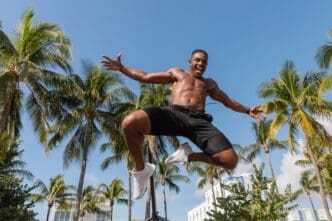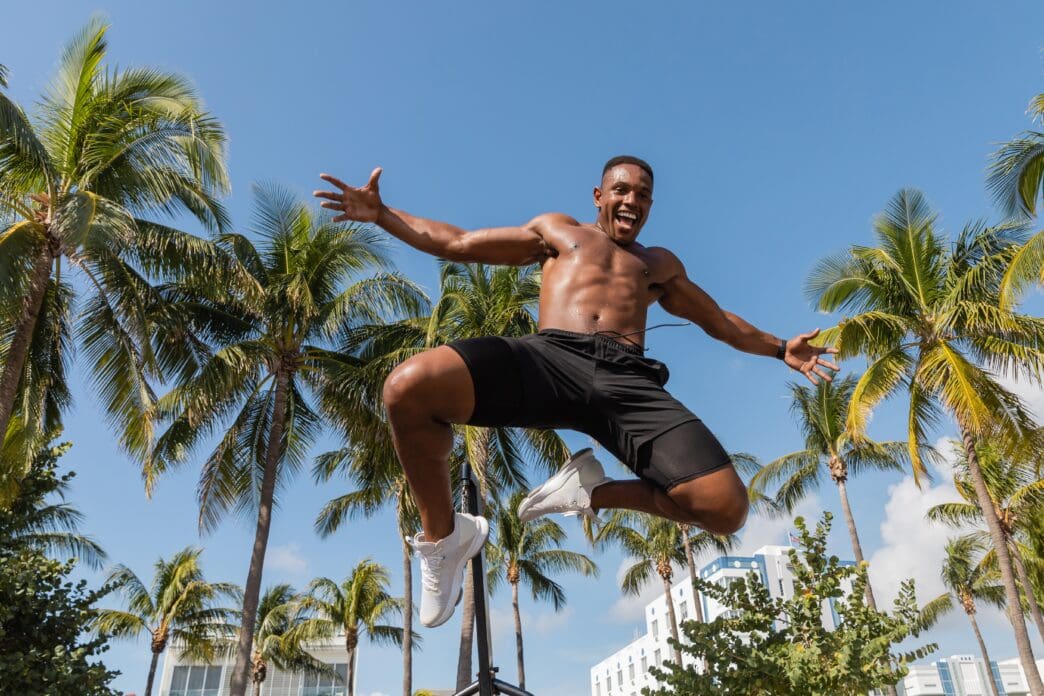A Quick Takeaway
The Story Behind the Trend
How to Make It Work for You
The Community View
Navigating workouts in Florida’s unique climate demands a proactive approach to hydration to safeguard health and optimize performance. For anyone engaging in physical activity across the Sunshine State, understanding and implementing expert hydration strategies before, during, and after exercise is paramount. The combination of intense heat and high humidity significantly elevates the risk of dehydration and heat-related illnesses, making diligent fluid and electrolyte replenishment not just beneficial, but absolutely critical for sustained well-being and effective training.
Understanding Florida’s Unique Challenge
Florida’s climate presents a significant physiological challenge due to its pervasive heat and high humidity, particularly during the lengthy summer months. The body’s primary cooling mechanism, the evaporation of sweat from the skin, becomes less efficient in humid conditions. When the air is already saturated with moisture, sweat cannot evaporate as readily, leading to a build-up of body heat.
This reduced cooling efficiency means that the body sweats more profusely in an attempt to regulate its core temperature, leading to accelerated fluid and electrolyte loss. Without adequate replenishment, this can quickly lead to dehydration, even during moderate exercise. Recognizing this environmental factor is the first step toward developing an effective hydration plan.
The Science of Hydration: Why It Matters
Hydration is far more than just quenching thirst; it is fundamental to virtually every bodily function, especially under the stress of exercise in a hot environment. Water plays a crucial role in maintaining optimal physiological processes, from cellular health to cardiovascular function.
The Role of Water in the Body
Water serves as the primary medium for transporting nutrients and oxygen to cells, and for removing waste products. It is essential for lubricating joints, protecting organs and tissues, and maintaining proper blood volume and pressure. Critically for exercise, water is the key component in thermoregulation, helping to dissipate heat through sweat production and evaporation.
Consequences of Dehydration
Even mild dehydration, defined as a 1-2% loss of body weight due to fluid deficit, can significantly impair physical and cognitive performance. Symptoms include fatigue, reduced endurance, muscle cramps, and difficulty concentrating. More severe dehydration can lead to serious heat-related illnesses such as heat exhaustion and heatstroke, which are medical emergencies requiring immediate attention.
Pre-Workout Hydration Strategies
Effective hydration begins long before you even step onto the track or into the gym. Starting your workout in a well-hydrated state provides a critical buffer against fluid losses. Think of it as topping off your internal reservoir.
Aim to consume approximately 16-20 ounces of fluid two to three hours before your workout, followed by another 8-12 ounces 10-15 minutes prior. Water is generally sufficient for this initial phase, but individuals who are heavy sweaters or plan for very intense sessions may benefit from an electrolyte-enhanced beverage.
Hydrating During Your Workout
Continuous fluid intake during exercise is essential to offset ongoing sweat losses, especially in Florida’s challenging conditions. The goal is to prevent excessive dehydration without over-consuming fluids.
Sip fluids regularly rather than chugging large amounts, which can cause stomach discomfort. A general guideline is to consume 4-8 ounces of fluid every 15-20 minutes, adjusting based on your individual sweat rate, workout intensity, and environmental conditions. For workouts lasting longer than 60 minutes, or those involving very heavy sweating, incorporating an electrolyte-containing sports drink becomes beneficial to replenish lost sodium, potassium, and other minerals.
Post-Workout Recovery Hydration
The hydration process doesn’t end when your workout does; post-exercise replenishment is crucial for recovery and preparing for your next session. The primary goal is to replace all fluids and electrolytes lost during physical activity.
A practical way to gauge fluid loss is to weigh yourself before and after your workout. For every pound of body weight lost, aim to consume 20-24 ounces of fluid within the next few hours. This can include water, electrolyte-rich beverages, and even water-rich foods like fruits and vegetables, which also provide essential vitamins and minerals.
Smart Beverage Choices for Optimal Hydration
Not all fluids are created equal when it comes to effective hydration. Making informed choices can significantly impact your ability to stay adequately hydrated.
Water: The Foundation
Plain water should always be your primary source of hydration for daily living and for most workouts. It effectively rehydrates the body without adding unnecessary sugars or additives. Always have a water bottle handy to encourage consistent sips throughout the day.
Electrolyte Drinks: When and Why
For extended workouts (over an hour), high-intensity exercise, or sessions where you are sweating heavily, electrolyte drinks can be invaluable. These beverages contain carbohydrates for energy and essential electrolytes like sodium and potassium, which are lost through sweat. They help maintain fluid balance, prevent muscle cramps, and support nerve and muscle function. Look for options with moderate sugar content to avoid gastric distress.
Avoid Dehydrating Beverages
Certain beverages can actually hinder your hydration efforts. Excessive consumption of caffeine, found in coffee and energy drinks, can have a mild diuretic effect. Alcohol is a potent diuretic and should be avoided before and immediately after workouts. Sugary sodas and fruit juices, while containing water, often have high sugar concentrations that can slow fluid absorption and contribute to sugar crashes, offering minimal real hydration benefits.
Listening to Your Body: Key Indicators of Hydration Status
Your body provides clear signals about its hydration status if you learn to interpret them. Paying attention to these indicators is crucial for proactive hydration management.
Urine Color Test
One of the simplest and most reliable indicators of hydration is urine color. Aim for a pale yellow, straw-like color, which suggests adequate hydration. Darker yellow or amber urine indicates a need for more fluids, while completely clear urine might suggest over-hydration, though this is less common during exercise.
Thirst
While thirst is a natural signal, it often indicates that you are already mildly dehydrated. Relying solely on thirst means you’re always playing catch-up. Therefore, it’s essential to drink fluids proactively and consistently, rather than waiting until you feel parched.
Other Symptoms
Beyond thirst, other symptoms can signal dehydration, including fatigue, dizziness, headaches, dry mouth, and muscle cramps. If you experience any of these, stop exercising, find a cool place, and begin rehydrating slowly with water or an electrolyte drink.
Practical Tips for Florida Workouts
Adapting your workout routine and habits to Florida’s climate is key to staying safe and hydrated.
Whenever possible, schedule your outdoor workouts during the cooler parts of the day, such as early morning or late evening. This significantly reduces exposure to peak heat and UV radiation. When exercising indoors, ensure the facility is well-ventilated or air-conditioned.
Opt for light-colored, loose-fitting, and moisture-wicking clothing. These materials help draw sweat away from your skin, promoting evaporative cooling and allowing your body to regulate temperature more effectively than cotton, which tends to absorb and hold moisture.
If you’re new to exercising in Florida’s heat or returning after a break, allow your body time to acclimatize. Gradually increase the duration and intensity of your workouts over 10-14 days. This allows your body to adapt by increasing sweat efficiency and reducing the physiological strain of heat.
Always carry a full water bottle with you, even for short walks or errands. This constant availability makes it easier to take frequent sips throughout the day and during your workout. Consider a larger insulated bottle to keep fluids cool for longer.
Understanding your individual sweat rate can help tailor your hydration plan. You can estimate this by weighing yourself before and after a typical workout, tracking fluid intake, and accounting for any bathroom breaks. This personalized data allows for more precise fluid replacement strategies.
Staying properly hydrated while working out in Florida’s demanding climate is a cornerstone of both performance and health. By proactively consuming fluids and electrolytes, understanding the unique challenges posed by heat and humidity, and tuning into your body’s signals, you can effectively beat the heat. Prioritizing hydration allows you to maintain peak physical condition, prevent heat-related illnesses, and fully enjoy the benefits of an active lifestyle in the Sunshine State.







